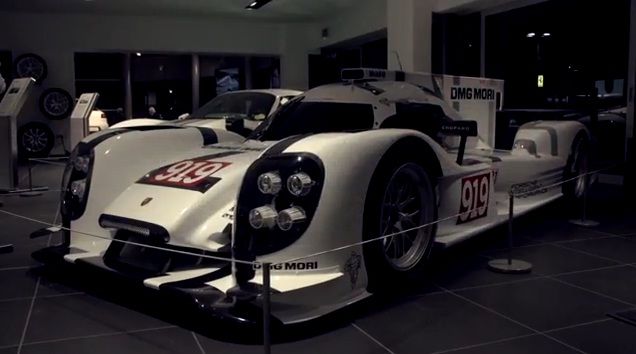When Porsche->ke1 unveiled the 919 Hybrid, the race car that brought it back to top-level endurance racing->ke447 after a 15-year hiatus, the company said it was named like that because it follows the tradition of the 917" and "acknowledges the embarkation into the hybrid future" with the 918 Spyder.
The three vehicles are obviously very different aside from the badge. They are powered by dissimilar engines and have different underpinnings. However, the 917, the 918 Spyder and the 919 Hybrid->ke147 are all motivated by the same thing, Porsche's passion for racing and track performance.
We knew these awesome machines would eventually meet face to face ever since Stuttgart established the link, and we were hoping to see the family reunite at the Le Mans->ke1591 track, before this year's race. But Porsche brought all three cars together two months earlier to use them at the preview evening of the new Macan crossover->ke288 in the United Kingdom.
Since we're already familiar with the 918 Spyder supercar->ke177 and the 919 Hybrid, which will be seen in action throughout the 2014 World Endurance Championship season, let's have a closer look at the 917, the vehicle that introduced Porsche to Le Mans->ke1591 success.
Click past the jump to learn more about the Porsche 917
.
Development of the 917, which is the second most famous Porsche race car after the 956/962, began in 1968, when the Germans set out to build a Sport category entry that will win the 24 Hours of Le Mans in 1970. The vehicle was finished in only ten months and showcased at the 1969 Geneva Motor Show. Powered by a 4.5-liter flat-12, the 917 went on to reach its goal and won at Le Mans by defeating the Ferrari->ke252 512S.
The car triumphed again the next year, when it was underpinned by a 92-pound magnesium frame and had an enlarged 4.9-liter engine under the hood. Lighter and more powerful, the revised 917 established several records, including an average practice speed of 155 mph, and an average race speed of 138.1 mph. It covered 3,315.2 miles during the 24-hour event. The race speed record still stands, while the distance record was broken 39 years later by the Audi->ke14 R15.
The 917 was soon to become obsolete at Le Mans, but its legacy continued in the United States, where it won back-to-back Can-Am championships in 1972 and 1973. The 1973 car was particularly special with up to 1,580 horsepower available from a 5.4-liter 12-cylinder mill. To this day, the 917/30 remained the most powerful race car ever built.

